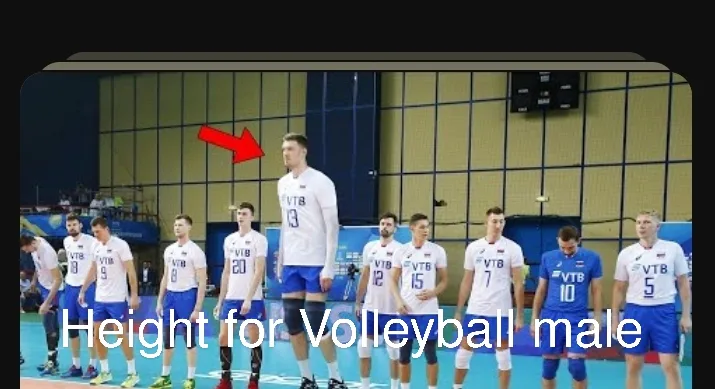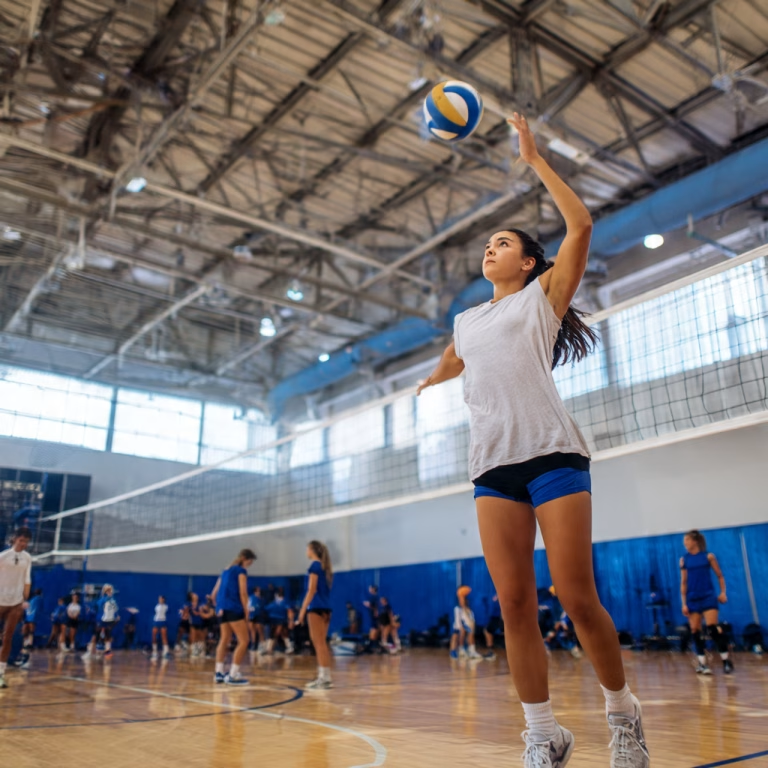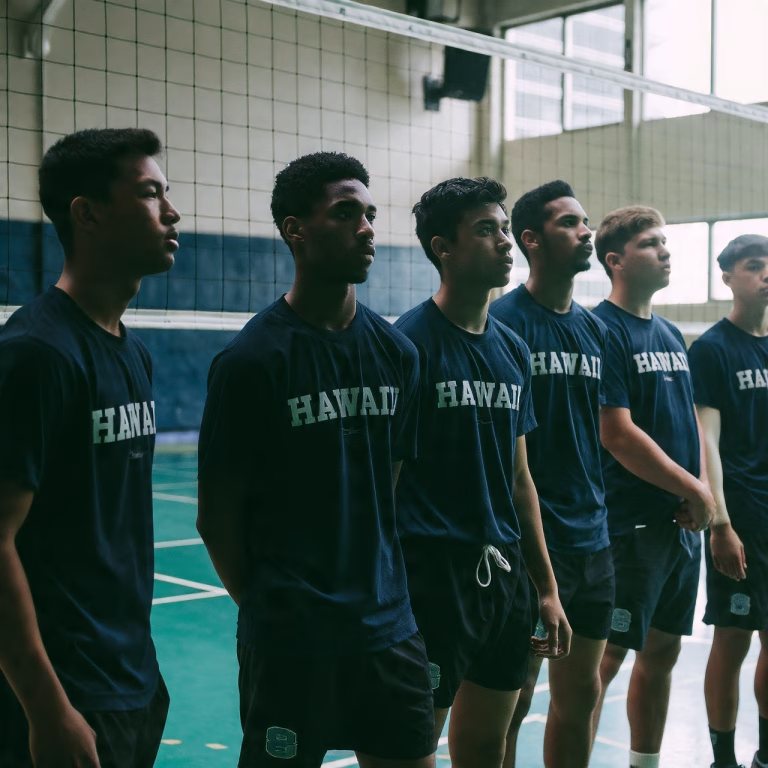I have seen a lot of volleyball enthusiasts, especially the males, asking questions to know the minimum height for volleyball player male. Well, in the world of volleyball, it is important to know that height is often seen as an important factor for players, especially male volleyball players.
Volleyball players with height will always have advantages in volleyball roles like spikes, blocks, serves, etc.
So, the question is, “Is there really a minimum height for male volleyball players?” Or “can shorter players make it just as far as their taller teammates?”
When it comes to volleyball, height is one of the first things people notice about players, especially in the men’s game, where taller athletes often appear to dominate the court.
But while height can contribute to certain advantages, it’s only one piece of the puzzle in what makes a player effective on the court.
In this article, we’ll explore why height matters in volleyball, minimum height for volleyball player male, common height expectations, and how players can succeed regardless of their stature.
Why Height is needed in Volleyball
In volleyball, height is a good factor to consider because of the game’s vertical nature. Taller male and female volleyball players are seen to have a physical advantage in reaching higher height, which is crucial for spiking, blocking, and serving.
To broaden this explanation, we’ll carefully look at some of the important roles of height in volleyball.
Read more: Digging in Volleyball: Skills, Techniques, and Guide on How to Dig in Volleyball
Important roles of height in volleyball:
1. Height in Spiking:
A taller volleyball player will have a better reach over the net, giving them more angles and power to attack the ball. This makes it easier for the player to hit over blockers and find gaps in the defense.
2. Height in Blocking:
Taller volleyball players can easily form a higher “wall” above the net, making it difficult for opposing hitters to score. This height advantage is particularly valuable for middle blockers and opposite hitters, who are primarily responsible for defending against spikes.
3. Height in Serving:
Serving requires a lot of volleyball skills and can be achieved by volleyball players of any height; nevertheless, taller volleyball players often have a longer arm span and can serve with more power and accuracy.
4. Coverage and Reach:
When defending or setting in a volleyball game, taller players can cover more ground and reach higher balls, which can be an advantage in both offense and defense.
What is the Minimum Height for Volleyball Player Male?
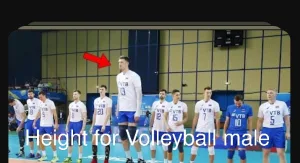
The minimum height for a male volleyball player generally falls between 5 feet 8 inches (172.72 cm) and 6 feet 2 inches (187.96 cm). To be competitive, players also need a vertical jump of at least 24 inches or more, depending on their position.
Read more about how to increase your vertical jump for volleyball.
While height can offer an advantage, especially at the net, strong jumping ability and athleticism are crucial for success in volleyball. Players below the typical height range can still excel with superior technique and agility.
Most male volleyball players at the professional level are taller than average, with heights ranging from 6 feet to over 7 feet (183 cm to 213 cm).
In some of the top professional volleyball leagues, the average height of male players is around 6’6” to 6’8” (198-203 cm). For example, in leagues such as the FIVB (International Volleyball Federation) and the Olympics, you’ll often see players well above 6 feet.
See Also: Tallest Female Volleyball Players
Is there any minimum height requirement for volleyball?
There is no official minimum height requirement to play volleyball. Any player, regardless of their height, can join the sport and develop skills to become a valuable team member.
However, certain positions may favor taller players due to the advantages mentioned earlier. In competitive and professional volleyball, there’s often an expectation for players to be above a certain height, but this varies depending on the position.
Some teams or scouts may prioritize height when selecting players, but skill, dedication, and fitness levels are equally important factors.
Read More: Minimum Height for Volleyball Player Female: Average Height for Male and Female Athletic
Height Expectations for Male Volleyball Players for Specific Positions
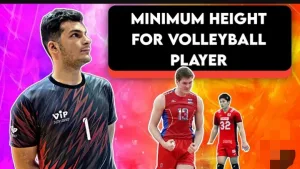
Different positions in volleyball have varying height expectations. Here’s a breakdown of typical height preferences for male players by position:
1. Outside Hitter (Wing Spiker):
Outside hitters are between 6’3” and 6’7” (190-200 cm), as they need height to hit over blockers and defend. However, some exceptional outside hitters are shorter and rely on jump height and precision.
2. Middle Blocker:
Middle blockers are often the tallest players on the team, ranging from 6’6” to over 7’0” (198-213 cm). Height is critical for this position to create an effective block against opponents.
3. Opposite Hitters:
Opposite hitters, like middle blockers, benefit from being tall, usually between 6’4” and 6’8” (193-203 cm). Height and power allow them to attack from the back row as well as defend.
4. Setter:
Setters are usually slightly shorter than hitters, averaging between 6’0” and 6’4” (183-193 cm). Although height is helpful, agility, quick decision-making, and precise ball placement are the top priorities for a setter.
5. Libero:
Liberos are often the shortest players on the team, typically around 5’8” to 6’2” (173-188 cm). Since their primary role is defense rather than spiking or blocking, they don’t need as much height but rely heavily on speed and anticipation.
See Also: Underhand Serve in Volleyball: Meaning and Step-by-Step Guide
Notable successful shorter male volleyball players
If you are aiming to build a career in volleyball but end up getting discouraged because of your height, then you should know that despite height preferences, several shorter male players have successfully built volleyball careers.
Some of the notable successful shorter male volleyball players that are globally recognized include:
1. Farhad Zarif (165 cm, 5 ft 5 in):
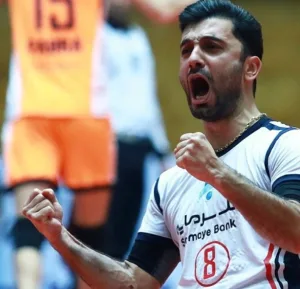
Farhad Zarif is an Iranian libero with a height of 165 cm, 5 ft 5 in. Despite the height, Farhad Zarif has achieved a lot in volleyball sports. He has demonstrated that height is not a limiting factor in the libero role.
2. Masahiro Yanagida (186 cm, 6 ft 1 in):
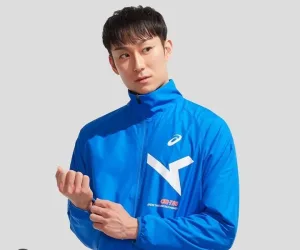
Masahiro Yanagida is a Japanese volleyball player. He is an outside hitter with a height of 186 cm (6 ft 1 in). Masahiro Yanagida has built a successful career through his athleticism and powerful jumping ability, proving that a shorter stature doesn’t prevent excellence.
3. Uros Kovacevic (198 cm, 6 ft 6 in)
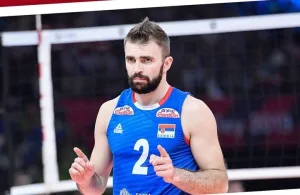
Uros Kovacevic is a Serbian outside hitter known for his versatility. Uros Kovacevic is 198 cm (1.98 m) or 6 ft 6 inches. He has showcased that skill and technique can often bridge the height gap in volleyball.
There are many other notable volleyball players out there who are not really tall but have built a successful volleyball career. Such players serve as reminders that skill, athleticism, and hard work can compensate for a lack of height.
See Also: 18 Cute Volleyball Hairstyles for Girls and Men Volleyball Players
How Shorter Players Can Compete in Volleyball
If you’re a shorter male volleyball player, here are some ways to maximize your impact on the court:
- Focus on Jump Training: A high vertical jump can help offset height disadvantages. Plyometric exercises, squats, and core training are essential for developing explosive jumping power.
- Improve Agility and Reflexes: Being quick on your feet and having sharp reflexes is vital, especially in defense. Agility drills, speed training, and reaction exercises are helpful.
- Hone Technical Skills: Mastering ball control, positioning, and timing are crucial. Whether you’re spiking, setting, or defending, technical proficiency can make a massive difference in performance.
- Build Mental Strength: Confidence, resilience, and quick decision-making are key qualities that can elevate a shorter player’s game. Stay mentally focused and adapt to various game situations.
- Leverage Your Role: Not every position requires height. If you’re shorter, consider roles like libero or setter, where agility and skill are more critical than vertical reach.
Height vs. Skill: Which Matters More in Volleyball?
While height is beneficial, especially in blocking and spiking, it’s only one aspect of the game. Volleyball is a highly strategic and team-oriented sport where skills like passing, setting, and court awareness are just as essential. Here are some reasons why skill can outweigh height:
- Strategic Play: A shorter player who understands game strategy and court positioning can be just as impactful as a taller player with limited skills.
- Team Dynamics: volleyball requires synergy. A skilled team with diverse strengths often outperforms one that relies solely on physical attributes.
- Adaptability: Shorter players tend to adapt by enhancing their skills in areas like defense, speed, and precision. This adaptability can turn them into valuable all-rounders.
A skilled 6’0” player can outplay an unskilled 6’8” player if they possess the right techniques and court sense. Coaches, particularly in youth and amateur leagues, are increasingly focusing on skill development rather than height alone.
Is Height Becoming Less Critical in Modern Volleyball?
In recent years, volleyball has evolved, and many teams have started valuing agility, speed, and versatility over just height. With the rise of specialized positions, players of all sizes can contribute to the game.
For example, the libero position has opened doors for shorter players to play vital defensive roles. Additionally, teams are now integrating more advanced training techniques to improve jumping ability and reflexes for all players, regardless of height.
Conclusion
While height is important for some volleyball positions, it is essential to remember that height alone doesn’t determine a player’s success. Many players who are not tall have achieved impressive careers in volleyball through other means, such as agility, skill, and mental sharpness.

